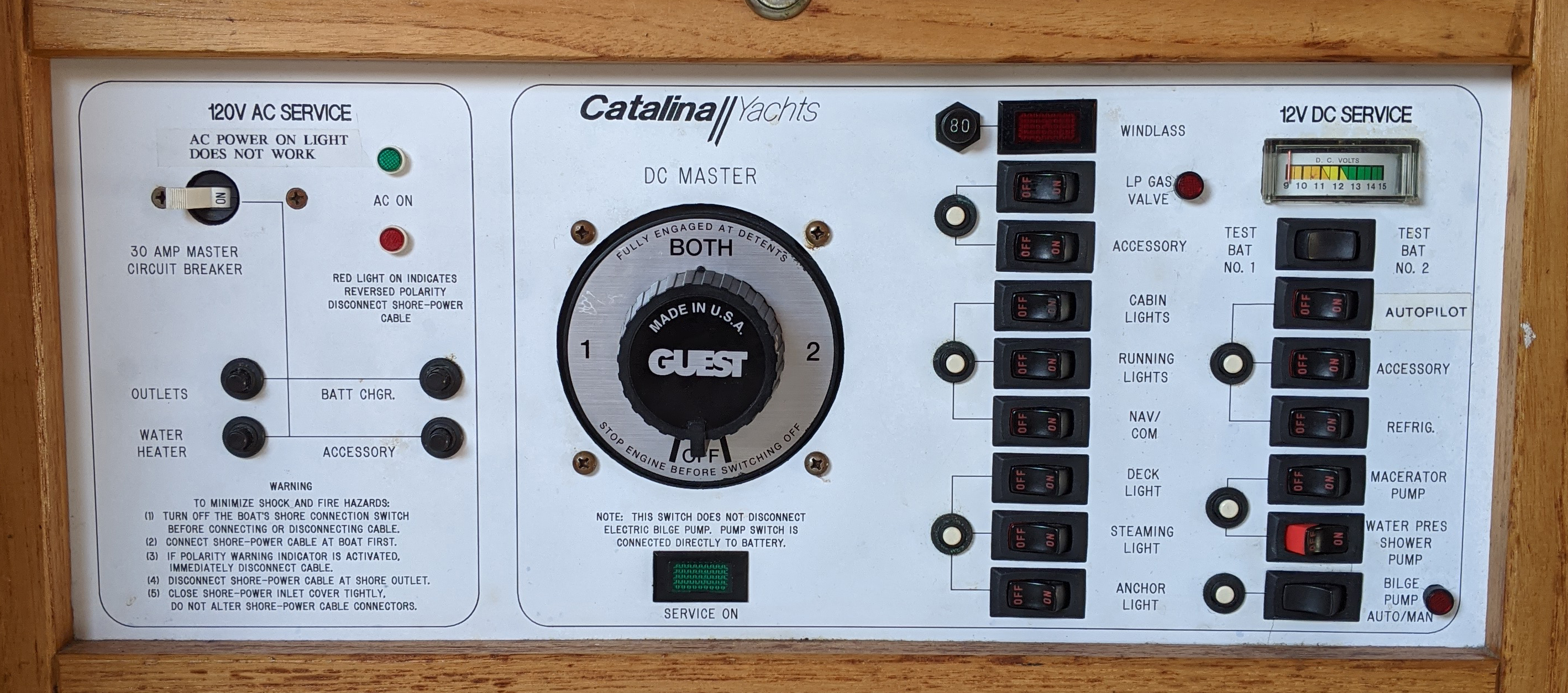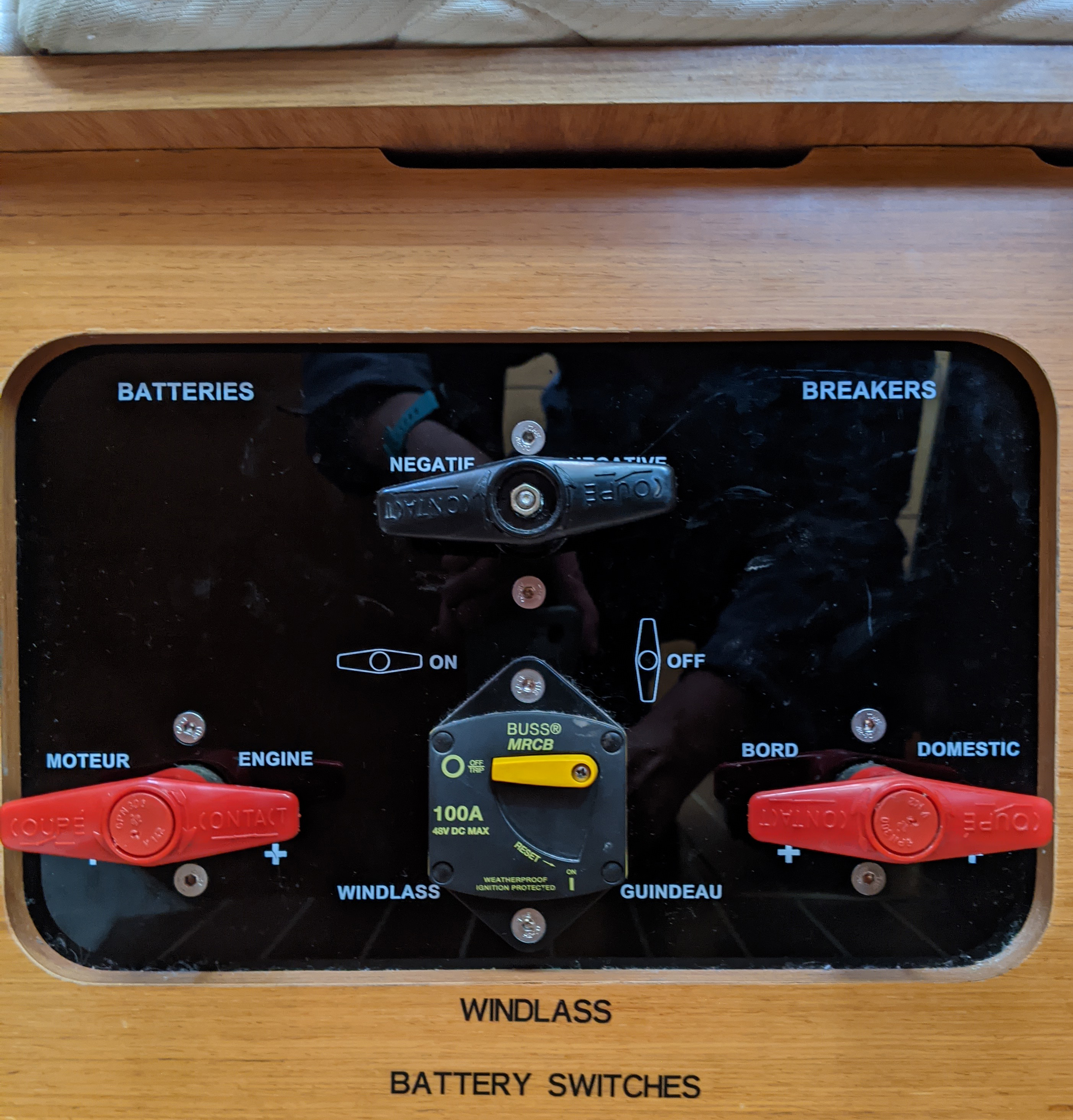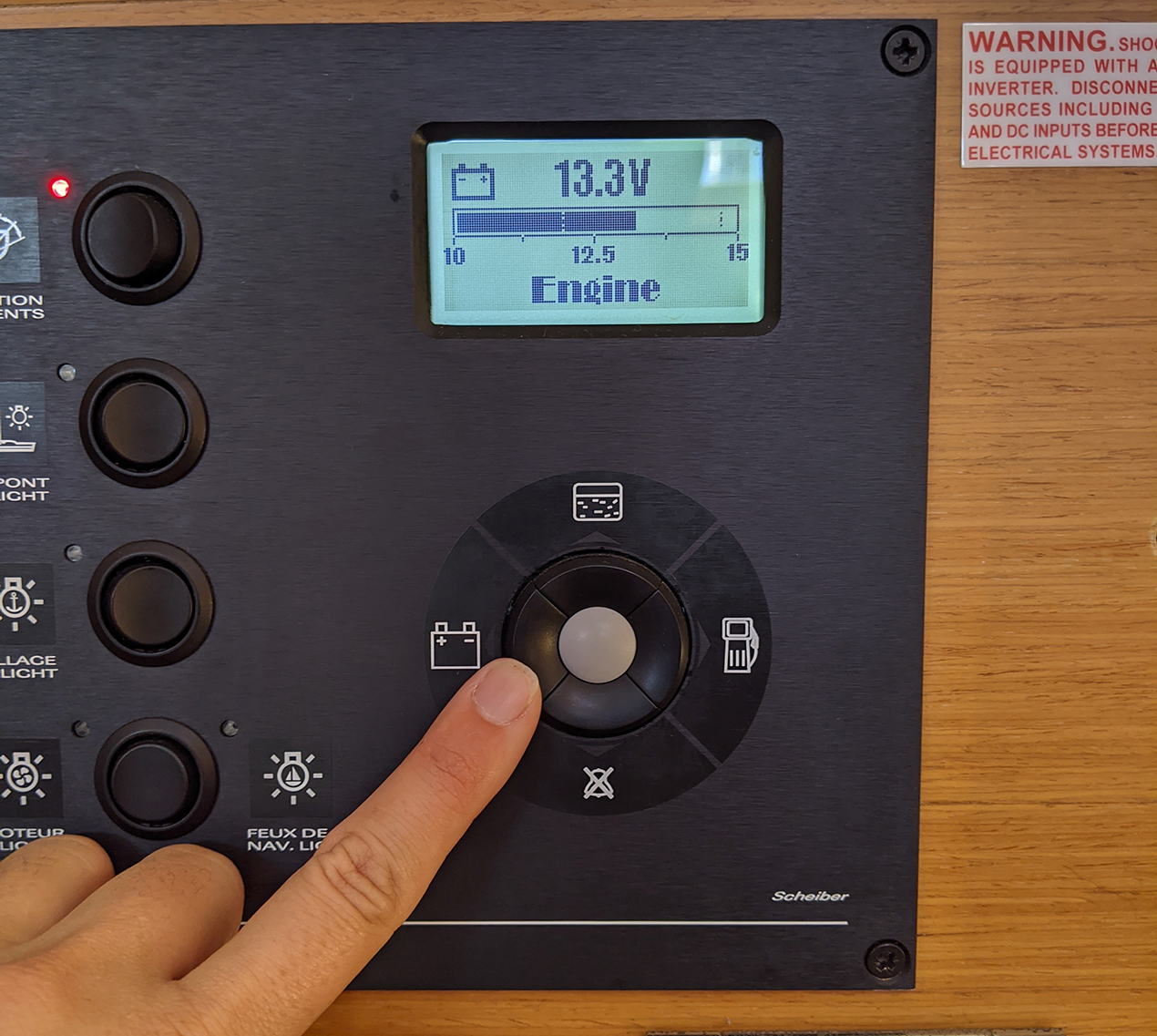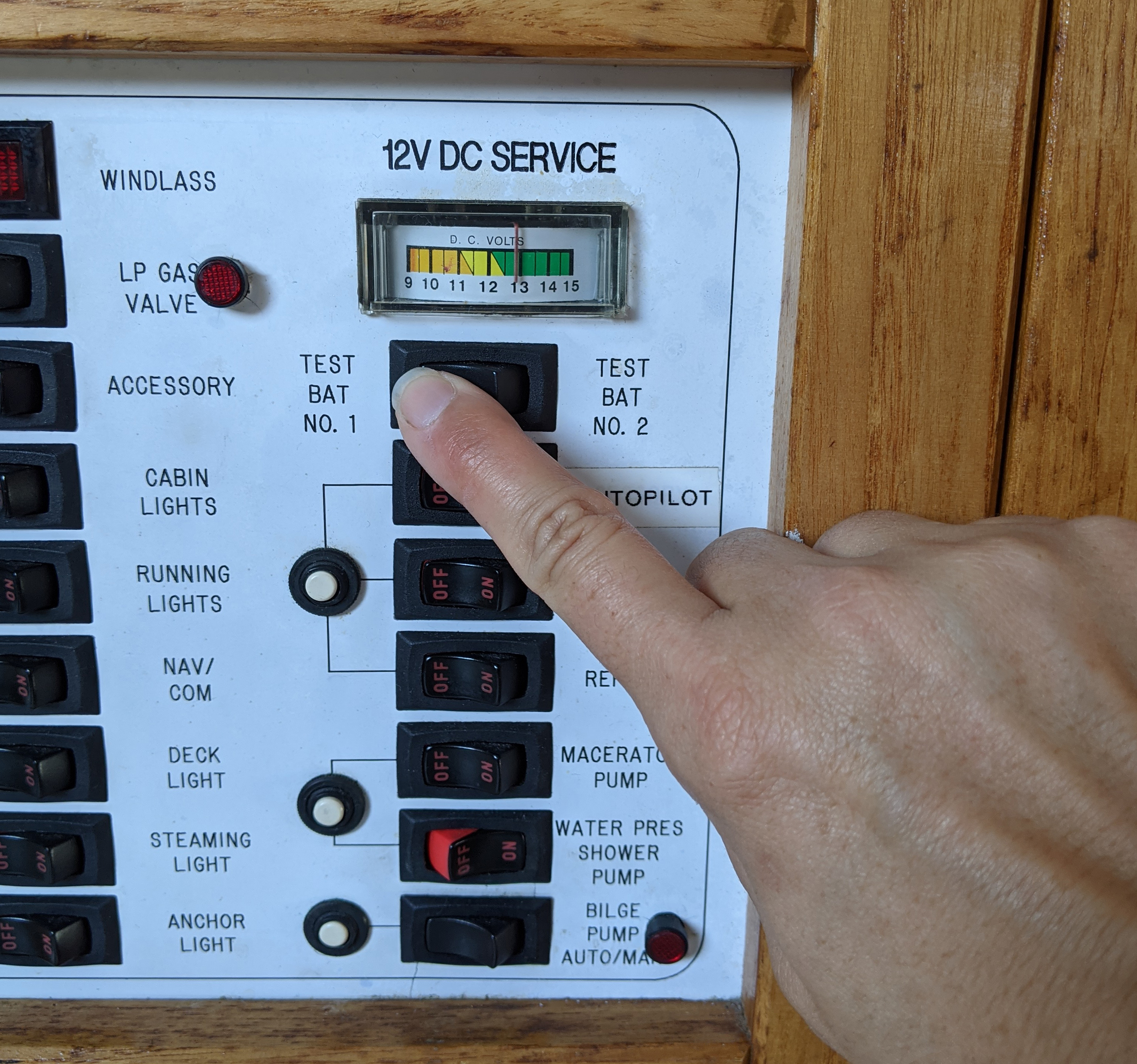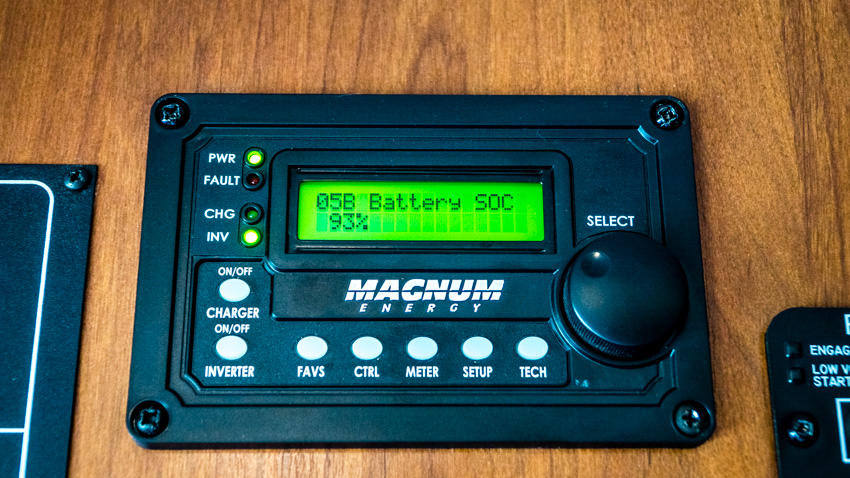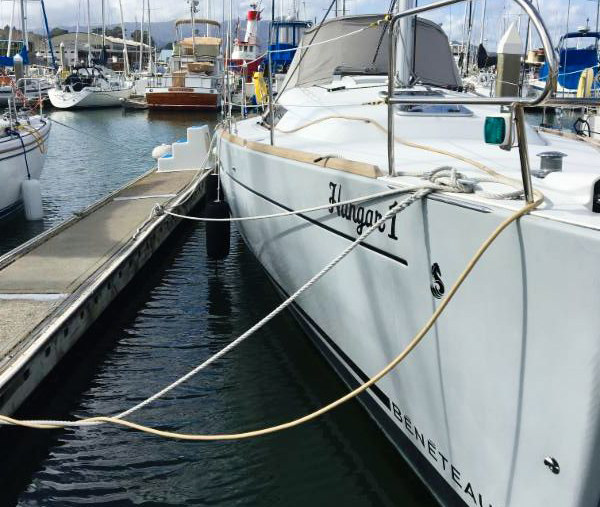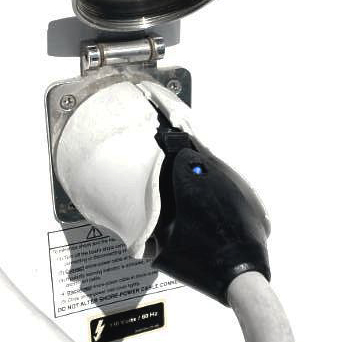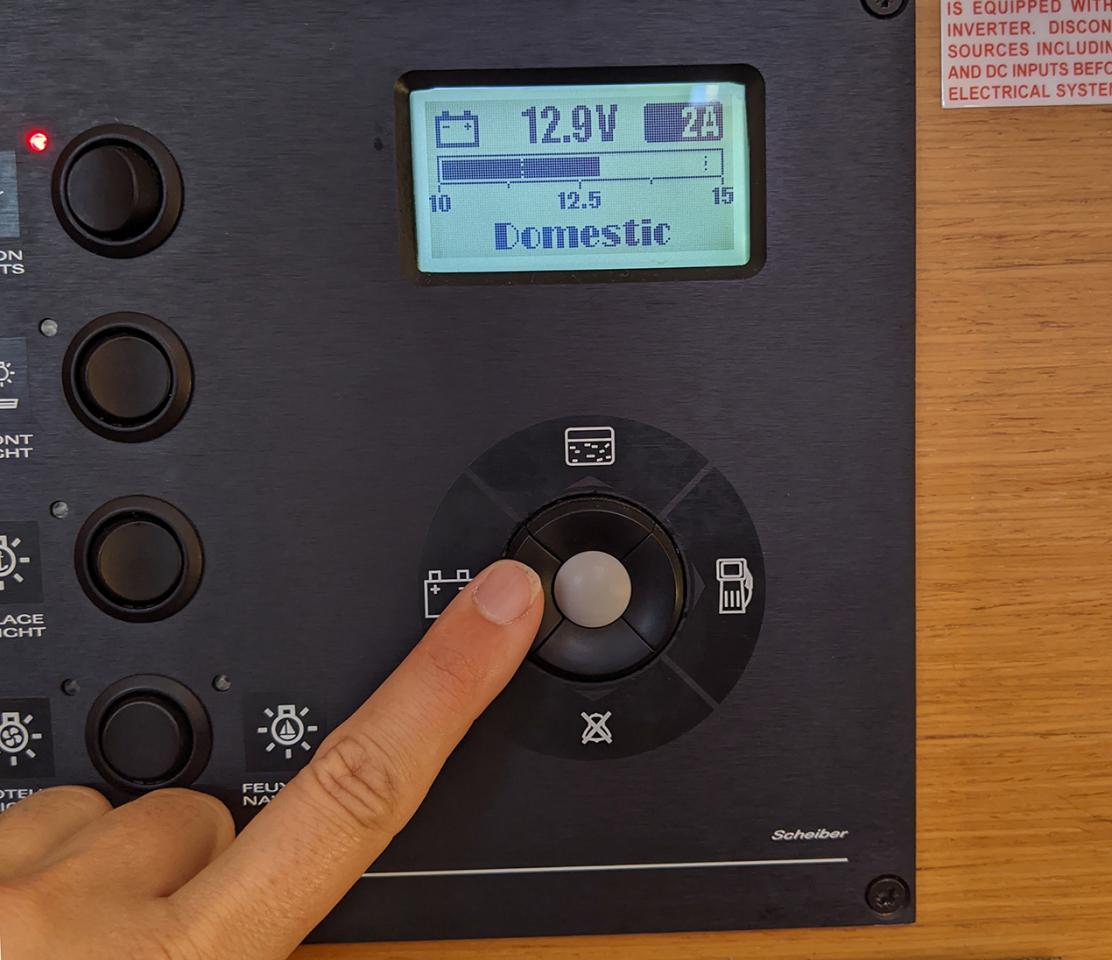
One of the most common causes for a marine engine's failure to start is also one of the simplest to prevent. Monitoring your power consumption while away from shore ensures your batteries will be charged enough to start the engine when you're ready to weigh anchor or douse the sails and motor in. These basic power management tips will help you keep your batteries healthy - and avoid a tow back to the docks.
Upon Arrival
- Turn the battery switch to “ALL” or “BOTH.”
- All Modern Sailing yachts have two or more batteries. At least one battery is dedicated to starting the engine, the other(s) powers the house electrics.
- On the Catalinas, the battery switches are dials usually located on or near the circuit breaker panel. (Our Catalina 36 Andiamo is the exception – her battery switch is located at the base of the starboard settee.)
Here is an example of a circuit breaker panel with battery switch on one of our Catalina 320s. The dial switch is shown rotated to the BOTH position.
- On the Beneteaus and Jeanneaus, you'll find the battery switches set into the base of a berth in an aft cabin. When the switch handles are horizontal, they are in the ON position. When vertical, they are set to OFF. The switch handles must be either all ON or all OFF.
This is an example of the battery switches on one of our Beneteaus shown in the ON position.
Starting the Engine
- At the dock box's shower power outlet, turn the breaker switch off before starting your boat's engine. This will enable you to verify that your engine will start independently of shore power.
- Back on board, locate your boat's battery monitor, which will be on or near the circuit breaker switch panel. Before starting the engine, it's a good idea to check the status of the battery while it is disconnected from shore power.
- Battery monitors vary from boat to boat. Some boats come with a battery monitor that displays the percentage of battery life remaining, while others will have a simple voltage meter. Some are digital displays, others are analog (needle indicator).
With this type of digital battery monitor, press the battery button to toggle between displaying the domestic (house) and engine battery's status.
The Catalinas have an analog indicator and a toggle switch to test the engine and house batteries separately. (NOTE: The engine battery can be either Battery 1 or Battery 2 - it depends on the installation. Don't worry about which is which. Just keep both batteries charged up and the switches set to ALL or BOTH.)
This type of battery monitor conveniently displays the percentage of battery charge remaining.
- Battery monitors vary from boat to boat. Some boats come with a battery monitor that displays the percentage of battery life remaining, while others will have a simple voltage meter. Some are digital displays, others are analog (needle indicator).
- Start the engine. You'll find instructions in your Boat Check-Out Form's "Unique Aspects of the Boat" section and also in your boat's white binder.
- When you're ready to go, unplug the shore power cord from the vessel and coil it tightly around the dock box. Ensure no part of the cord (especially the plug/connector) is at risk of dangling in the water. You may take the shore power cord with you if you plan to dock overnight at a different location.
- IMPORTANT: Discuss the importance of electricity conservation with your crew.
While Sailing or at Anchor
- On most MSC boats, leave the battery switches turned to ALL, BOTH, or in the horizontal position. On the Catalina 30s, turn the battery switch to OFF unless you need to turn on the navigation lights or start the engine.
- Turn off any unnecessary electrics at the circuit breaker panel.
- Leave the switch labelled Battery Charger, A/C Main, or A/C Master ON. With this switch off, your batteries will not charge.
- If your boat is equipped with a refrigerator/freezer, switch it off at the circuit breaker panel to conserve power. It is recommended to leave it off whenever you are away from shore power.
- Do not attempt to use high-wattage appliances such as a microwave or a hair dryer while disconnected from shore power. If your boat is equipped with an inverter, you can use the microwave, but monitor your battery status closely. Learn more about onboard power and inverters in our article Onboard Electricity Basics.
- IMPORTANT: When operating the windlass, the engine MUST be running, otherwise the batteries will be drained very quickly.
Monitoring Battery Status
During your sail or while at anchor, periodically take a look at the battery monitor to check on the status of the batteries.
- 12.7 volts or more represents a fully charged battery.
- When the voltage meter displays around 12.4 – 12.3 volts, run the engine for a bit to charge up the battery.
- IMPORTANT: Do not let your battery charge drop below 50% (12.2 – 12.3 volts).
| STATE OF CHARGE | BATTERY VOLTAGE |
|---|---|
| 100% | 12.7 – 12.8+ |
| 75% | 12.4 – 12.6 |
| 50% | 12.2 – 12.3 |
| 25% | 12.00 |
Returning to Dock
Following these steps will ensure that the batteries will be fully charged up for the next charterer.
Two crew members, one on deck and one on the dock, will work together to reconnect the shore power cable, taking great care to ensure that neither end of the cord falls into the water. (Saltwater is highly corrosive and will quickly - and permanently - damage a shore power cable.)
- Run the shore power cord through the bow pulpit.
- With the crew member on the dock feeding out the cord to the sailor on deck, walk the shore power cord to the back of the boat.
- Wrap the cord once or twice around the stern pulpit or lifeline, then connect the female end of the cord to the boat’s shore power receptacle.
- Back at the bow of the boat, wrap the shore end of the power cord once or twice around the bow dock line to help keep it from dangling in the water. Leave enough slack in the cord to allow for the normal motion of the boat in the slip.
- Take care to not allow any part of the shore power cord to dangle in the water. Even though the cord is insulated, it can release stray current into the water, increasing the possibility of causing electrolysis damage to metal components below the waterline on boats nearby. If there is enough length in the cord, one loose wrap around the dock cleat can help keep it in place.
- Take care to not allow any part of the shore power cord to dangle in the water. Even though the cord is insulated, it can release stray current into the water, increasing the possibility of causing electrolysis damage to metal components below the waterline on boats nearby. If there is enough length in the cord, one loose wrap around the dock cleat can help keep it in place.
- Flip the power switch at the dock box back to the ON position. The blue LED light found on most MSC shore power cords can be used as an indicator that shore power is live.
- Switch off all house electrics at the circuit breaker panel. Ensure that navigation lights, cabin lights, water pressure, instruments, et cetera, are switched off.
- IMPORTANT: Again, please leave the switch labelled Battery Charger, A/C Main, or A/C Master ON to ensure that the batteries will charge.
- Also, leave the automatic bilge pump switch ON.
- Switch the batteries to the “OFF” position.
Questions about onboard power management? Learn more by taking ASA courses 101 - 103. ASA 104, Bareboat Cruising covers this topic in detail. As a Modern Sailing member, you may also ask questions of our instructors when you arrive for your charter.
By Mary Elkins on October 22, 2020
